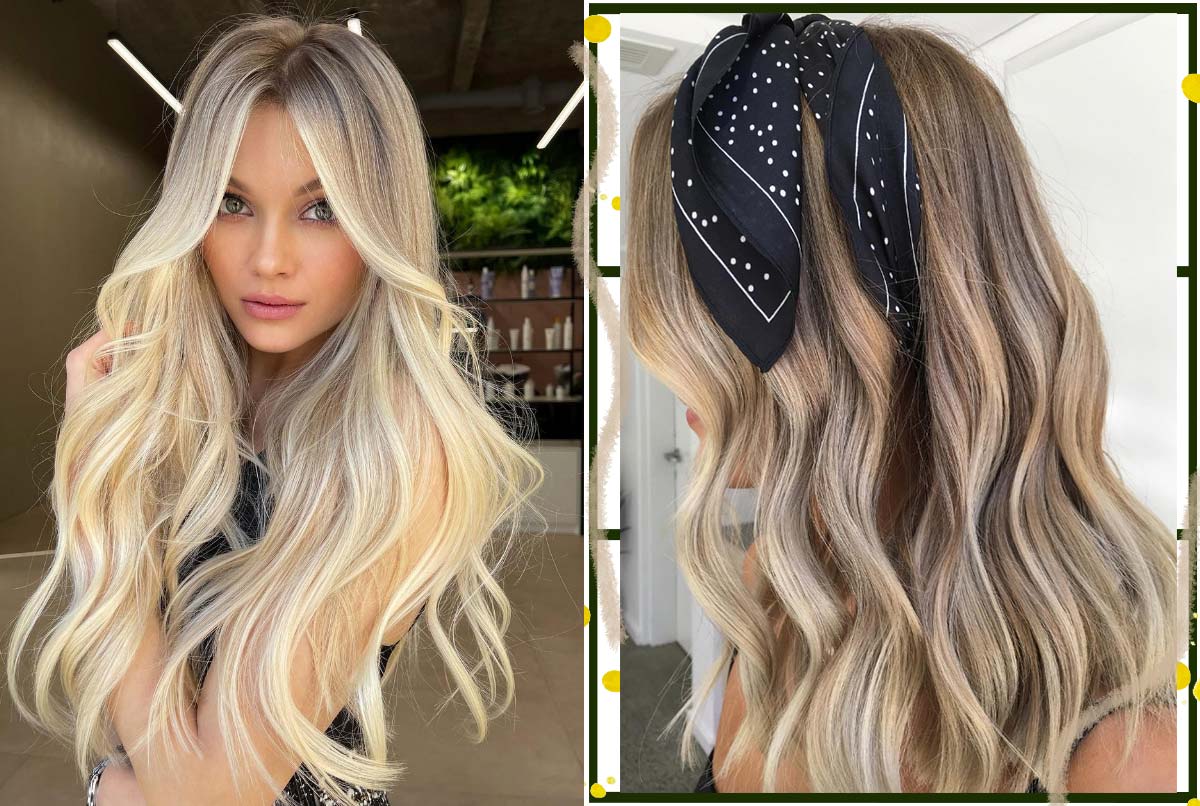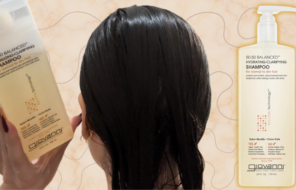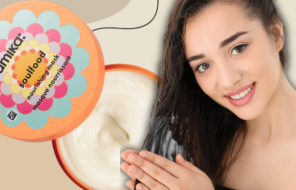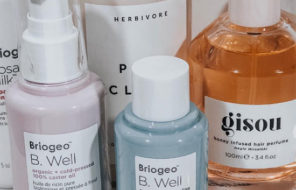- Hot oil treatment implies using plant-based oils to the hair, sealing in cuticles, nourishing dry, brittle hair, moisturizing, and preventing frizz.
- It’s perfect for all hair types, although those with dry, natural hair benefit the most.
- You can either DIY or try ready-made options at home.
Among the top hair care options in the industry, hot oil treatment certainly tops the charts for nourishing locks exposed to harsh weather and chemicals, appearing dry and frizzy, with split ends. The hot oil seals hair cuticles, moisturizing and strengthening while ensuring a beautifully sleek and healthy appearance, revitalizing your mane from the comfort of your home.
In this article:
- What Is Hot Oil Treatment for Hair?
- Hot Oil Benefits for Your Hair
- Can Hot Oil Help with Hair Growth?
- Can Hot Oil Treatment Damage Hair?
- Best Oils to Use for the Hot Oil Hair Treatment
- What Hair Types Benefit Most from Hot Oil Treatments?
- How to Make Your Hot Oil Treatment at Home
- How to Apply Hot Oil to Your Hair
- Do You Put Hot Oil on Wet or Dry Hair?
- How Often Can You Do a Hot Oil Treatment?
- Final Tips on Hot Oil Hair Treatments
What Is Hot Oil Treatment for Hair?
A treatment option for your hair and scalp, the name says it all. Hot oil treatment involves the use of hot oils in treating damaged hair and ensuring vitamins and nutrients are injected into every strand. Essentially the amalgamation of the finest essential oils, you will be growing long and healthy hair for the years to come.
A solution to dry scalp, dandruff, excessive shedding, breakage, and thinning, among others, hot oil treatment is the go-to for many women. It is especially good to tresses normally under a lot of stress through teasing, curling, straightening, highlights and color treatments, perms, and permanent straightening salon visits.
As most of us subject ourselves to varying levels of extreme heat and styling products with a large number of chemical components, something more natural is needed to counteract the damage our hair is exposed to. There is very little hot oil treatments are NOT good for. It’s certainly worth the pampering.
Hot Oil Benefits for Your Hair
Counteracting the negative caused by chemical and heat exposure, hot oil treatments are great relaxers for strained and stressed hair. The benefits are plenty, and the side effects nonexistent. It is recommended to use this hair treatment often to health and shine.
Helps Moisturize
Dry and brittle hair will sigh in relief when hot oil is applied, excited to shed its dull demeanor and take on some life again. The cold weather does a number on your mane’s appearance, and your hair will only thank you for the revitalizing effects of the treatment. The application of proper hot oil products once a week ensures you never worry about dryness and frizz, permeating the follicles and moisturizing from the inside out.
Prevents Damage
Straighteners, curlers, salon visits for perms, ironing, and color treatments all attack the building blocks of your hair and leave it in dire need of assistance to get back to the health in shine it boasted before you decided to stress it out. The oil helps minimize the damage caused in the name of beauty, adding vibrant buoyancy to otherwise brittle strands.
Furthermore, some hot oils penetrate deep into the strand, preventing it from absorbing undue amounts of water, which could cause damage itself. Coconut oil has been proven to prevent protein loss in the strands, making it one of the top choices in preventing damage.
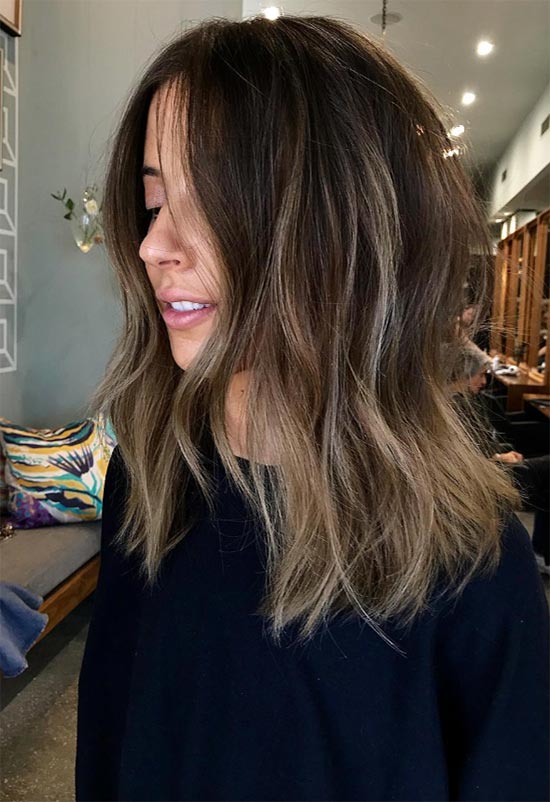
Combats Aggressors
Surfactants that your hair comes into contact with on a daily basis can be fought against with a better arsenal when you use oil on your hair. Mineral and sunflower oils have a filming effect, meaning that if you are often in a place with high pollution, you might want to opt for such a treatment.
Prevents Frizz
Split ends and frizz are a thing of the past if you ensure your hot oil treatments are done properly and on time. No matter the season or the exposure to color and other chemicals, your hair will thank you for the healthy glow. Plus, there’s improved elasticity!
Shields from the Sun
Sun damage is a very real thing, and there’s a reason hats and scarves and headdresses were common around the world, keeping the harmful rays of that beautiful ball of light from touching well-cared-for hair. Discoloration and weakness to the strands could happen, which the oil will protect you from.
Prevents Dandruff
Your hair will shine and glimmer in the sun, but it’s dandruff that you will be happiest to have said goodbye to. You’ll no longer have to deal with dry scalp and excessive shedding due to dandruff that looks like you’d salted the meat. Strengthening the hair from the scalp to the tip, there is no reason why you shouldn’t treat yourself to some hot oil on your hair.
Improves Blood Circulation
To manage it all, the hot oil treatment massaged onto the scalp improves blood circulation and ensures the nutrients carried within your body are working in tandem with the nutrients supplied by the product itself.
Can Hot Oil Help with Hair Growth?
As we mentioned above, yes, it can. There are a few reasons for this.
- Hot oil increases the elasticity of your strands, keeping them from breaking.
- Massaging it onto your scalp stimulates the blood flow to the roots, allowing more nutrients to find their way down to the tips.
- Ridding yourself of dandruff reduces hair shedding, effectively adding volume to your tresses and making it appear longer, at least.
- Preventing damage allows the natural oils to slide to the ends, reducing split ends.
There are many reasons why hot oil treatments help with hair growth, but you should try it to see for yourself.
Can Hot Oil Treatment Damage Hair?
While the treatment itself shouldn’t cause any problems, there are instances where damage may occur. First, and we’ll stress this multiple times, ensure the temperature is not scalding hot but more on the warm side. You want to be able to dip in a finger without immediately pulling it out in pain.
Sensitive scalps may also not take well to the use of non-natural products. While those you make at home will undoubtedly be clean, the ready-made hot oil treatments might contain ingredients that cause an adverse effect.
Furthermore, certain oils might not work well with certain hair types. Always try a small patch test, especially at the crease of your elbow, and wait for 24h to see how your body reacts to it first.
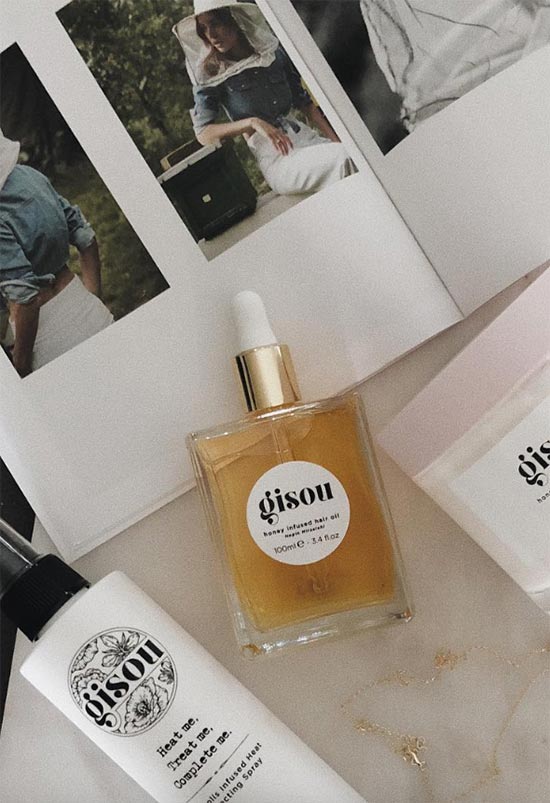
Best Oils to Use for the Hot Oil Hair Treatment
Hot oil treatment for hair is extremely effective and should become routine. However, you must be wondering what you should be using in the first place. There are many on the market and even more articles about completely natural versions found in your very kitchen. So, which is your best bet for eliminating the frizz, clearing out dandruff, and bringing back that healthy shine?
The truth is that almost all oil types could be beneficial, though some are more effective on certain hair types than others. And while there is a whole slew of packaged products to pick up for home use, we also have a list of that which you would normally have in your home.
Most oils have a great many benefits beyond your mane, as well, so be sure to look them up or check our other articles.
Coconut Oil
For years now, coconut oil tops the charts as the peoples’ favorite natural oil. One of the most versatile, it can be used for everything, from preventing stretch marks to cooking to conditioning your hair. Soft to the touch and incredibly light, it is the go-to product that appears in every pantry, every bathroom, and kitchen.
When it comes to using it on your hair, it will certainly heal some of the damage and get rid of the frizz while injecting much-needed nutrients. It’s perfect for dry or extremely curly hair.
Castor Oil
Oily or thin hair benefits most from castor oil, another more common staple around the house. Containing omega-9 fatty acids, castor oil has been the hair treatment option for decades now, protecting against damages and keeping dandruff at bay. Strengthening the roots, it also prevents shedding and breakages.
Argan Oil
Often referred to as “liquid gold” in the industry, most hair care products include a certain amount of this oil that is rich in nutrients and an essential for those with finer strands. Omega-3, omega-9, and vitamin E are found in argan oil and are important to the nourishment of your hair. Frizz is kept at bay, your locks will come out soft and silky, and where the hot oil treatment goes, it will ensure such shine as you have never seen before.
Almond Oil
We love almond milk, but the oil is even better for you, particularly when applied to your hair. Vitamin E being the main ingredient here, it stimulates hair growth and protects against the elements, not allowing for the change in seasons to damage your beautiful mane. Extremely light on its own, it is easy to apply and both moisturizes and reduces inflammation on the scalp. If breakage is your biggest problem, it’s best to choose almond oil.
Lavender Oil
For the really itchy scalp, lavender soothes and eases the annoying need to keep poking at the flaking skin. The antimicrobial properties reduce bacterial infections, reduce itching, and even help kill lice.
Avocado Oil
Another main ingredient in top hair care products, avocado oil is one of the best for this treatment. Amino acids, fatty acids, vitamins, A, D, E, and B6 are all prominent in avocado oil, making for a top-notch option to utilize.
Olive Oil
Quite possibly the most accessible of oils in your home, heated olive oil is one of the best. Rich in vitamins A and E, as well as antioxidants, it will ward off signs of aging like greying and thinning, keep dandruff at bay, and ensure each strand is soft and moisturized, silky in its shine under the sun. You shouldn’t use it too much, but a small amount gets you a long way.
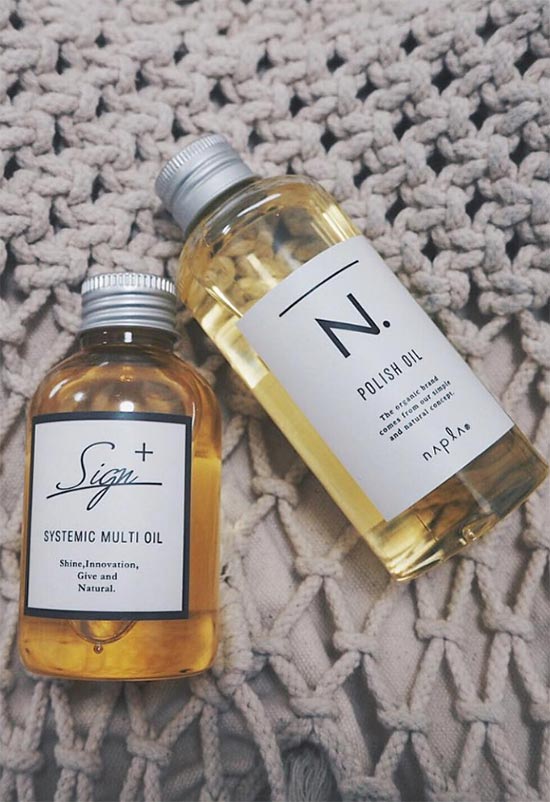
What Hair Types Benefit Most from Hot Oil Treatments?
All hair types benefit from hot oil treatments, but each type of oil is specifically better for a certain hair type. We touched upon some of it in the earlier section, but it’s important to delve a little deeper. After all, no two people share the exact hair DNA, but the overarching types generally work in favor of most.
You will have to go through trial and error to find what works best for you. Both the oil type and the amount of time each is used differ based on hair type. Don’t forget that your age and exposure to harmful chemicals, air quality, food quality, and other factors play into the health of your, as well.
Hot Oils for Normal Hair
If you sport neither dry nor oily hair, you fall into the “normal” category. It’s best to use hot oil treatments once a month in this case, as you won’t need to do as much to keep the healthy sheen and the moisture locked in. Should you find it’s not enough, you are free to increase the intervals to every two weeks. It’s rare that you might need it once a week. All oils are great to use in this case.
Hot Oils for Oily Hair
It may sound strange to add hot oil treatments to oily hair, but when it comes to colored tresses, you will need to protect the hair from damage, ensure proper hair growth, and nourish the strands well. Use the treatment every fortnight for no longer than an hour each time for optimal results. Almond oil is your best bet, along with coconut oil, so that you’re not weighing down your locks. Jojoba oil is also great.
Hot Oils for Dry Hair
Dandruff is your worst enemy here, as your scalp gets dry and your hair gets brittle. Coconut oil is the best option, as it enhances shine, restores softness, and is lightweight, absorbed quickly, and does not leave any oily residue on your hair. You might also want to moisturize your scalp with argan oil, tea tree oil, or rosemary oil, ridding yourself of the flaking and the itch. You’ll want to use these with every wash for the best results when your scalp is at its worst.
Hot Oils for Color-Treated Hair
No matter the hue you color to, be it red or blonde or brown or black, you will need regular hot oil treatments to keep the healthy appearance. Since you expose your hair to chemicals, it’s best to do this at least once a week by leaving the oil in overnight and washing it out in the morning. This ensures beauty and volume, with strands free of the damage associated with chemical treatments.
Hot Oils for Kinky Coarse hair
Castor oil will be your best friend here as you look for what’s suitable to the coarser strands you were born with. It will resolve the problem of dryness and brittle ends. Coconut oil will do wonders for the scalp, keeping it free of itch and dandruff. Best results are achieved with weakly treatments.
Hot Oils for Fine Hair
You may be hesitant to add oils to finer hair, especially if you have an oilier scalp. Jojoba and grapeseed oils are similar to that which you naturally produce, but chamomile oil, for example, might actually bring out the best from your strands. Preventing damage and protecting against the brittle nature of finer hair, it’s best to use the hot oil hair treatment once each fortnight.
How to Make Your Hot Oil Treatment at Home
Offering luxury in your own home, hot oil treatments make you feel like a queen… or at least a celebrity. The fact that you can prepare it at home and don’t need to spend any amount of money at a salon, let alone the absurd numbers some treatments require, is heavenly in and of itself.
You will need an oil blend (your preference and what works well with your specific hair type), a heat-safe bowl or glass container, a larger bowl, hot water, a plastic shower cap, shampoo, and conditioner.
Common Ingredients
Since most people have normal or near-normal hair types, we’ve put together an option for making a great hair treatment at home. An example of a homemade treatment would be:
- Sweet almond oil, jojoba oil, coconut oil, avocado oil, olive oil, or any other oil. You may also mix based on what works best for your type
- Additional essential oils (optional)
- Infused herbs (optional)
Essential oils can be added to the hot oil mixture to add to the fragrance and add their own nourishing effects. It is recommended to add chamomile or carrot seed oil for moisturizing, rosemary oil for added shine to dark hair, or sandalwood for an earthy scent. Parsley and black tea may also be added for strengthening purposes.
A few different concoctions include:
- Avocado, olive, coconut, and castor oils mixed together for normal hair types
- Coconut and extra virgin olive oil mixed for dry hair types
- Equal parts extra virgin olive oil, avocado oil, and coconut oil for dry and brittle hair, as well as for the extra curly ones
Preparation Method
- Put 3-6 spoons of the pure oil you decide on in a microwave-safe bowl, according to your hair type, or if you have normal hair, according to which scent and feel you prefer. The longer your hair, the more oil you need.
- Add a drop or two of essential oils into a bowl for a more scented treatment. Stir the mixture using a spoon. Rosemary, lavender, and rose are great options for strong but calming scents.
- Put the bowl on a heated stove and slowly boil the mixture. A cheesecloth or coffee strainer can then be used to strain the chopped herbs, should you opt to use them.
- Put the oil in a container, ready to use.
- Another way to do it, without placing the bowl on the heat source directly, is to put a small amount of the oil in the heat-safe bowl, which is then placed in a larger bowl full of hot water, partially submerging the oil-laden smaller one for a few minutes.
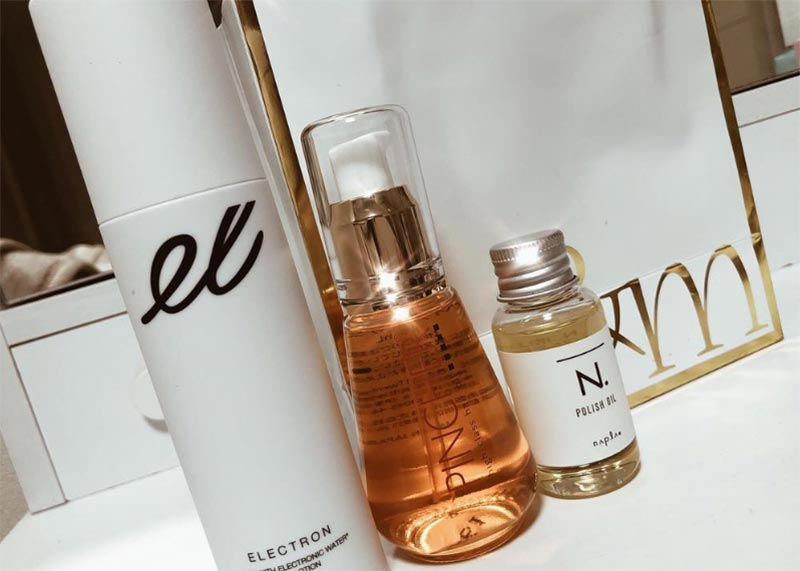
How to Apply Hot Oil to Your Hair
Now that you have your concoction ready and wish to leave it in your hair for either an hour or a full night, here is how you work it in:
- Wash your hair to rid it of the extra oils and dirt, allowing for better absorption of the nourishment you will give it. The oil can be applied to both dry and wet hair.
- Once the right temperature has been reached, test it and rub your hands together to coat all your fingers.
- Comb through your hair to detangle and allow for easier access to every inch of each strand.
- Massage the hot oil concoction (use your finger to see if you can comfortably dip it in without scalding) onto your scalp. Use a squeeze bottle for better results and ease of use. Otherwise, 5-6 tablespoons should work. You’ll be combing the oil from root to strand, section by section.
- As you finish each section, twist the strands and clip them out of the way.
- Wrap your hair in a towel for 30-60 min. A shower cap can also be used.
- You could technically do all this in the shower so as to keep the flow. Just make sure it’s a long shower, and your hair is well protected under the cap. You don’t want to rinse too early.
- Rinse your hair to remove the oil, giving yourself a thorough wash with double shampooing to fully get rid of the oil residue. Condition the ends as you normally would before fully rinsing it all out.
- Comb your hair and allow it to air-dry for best results.
Do You Put Hot Oil on Wet or Dry Hair?
This one we’ve answered a few times already in stating that both wet and dry hair can be used for the treatment. If you plan on leaving the concoction on overnight, it will most probably be on dry hair. Wet hair, however, tends to retain the moisture better, making it the better option. Even partially wet is better than dry in this.
How Often Can You Do a Hot Oil Treatment?
We touched upon the different preferred time-lapses for using this treatment earlier, but to sum it up, it won’t hurt you, and it will only help; so long as you’re using the right oils for your hair type. For those with especially dry or chemically damaged hair, every other way sounds about right. Usually, once a week is more than enough, while most opt for every fortnight. Having it done once a month is better than not doing it at all and is considered ideal for normal hair types.
Final Tips on Hot Oil Hair Treatments
- Tip 1: Make sure not to overheat the oil during the making process, as you should not be making it so hot to scald your scalp and cause injury. To check the temperature, test a small amount on your wrist.
- Tip 2: Give your hair enough time to soak up the vitamins and amino acids before washing it out. The minimum time it should remain on your hair is 15 minutes, though it is recommended to go for a full half an hour, if possible.
- Tip 3: It’s best to steer clear of sunflower and mineral oils, as they tend to sit atop your strands and not get absorbed in. This just leaves the hair looking greasy. Unless, of course, you’re looking to coat your strands for added protection against pollutants.
- Tip 4: If you have any skin conditions, talk to your doctor before trying any treatment. Psoriasis and eczema might not respond well to the heat. It might also not respond well to certain types of oils. To reduce your risks, make sure anything you use is 100% natural, without synthetic ingredients. To check for reactions, you may apply a small amount to the inside of your elbow and wait for 24h. If you do have a reaction, test different oils until you get it right.
- Tip 5: You can get much of the same benefits without adding the heat. You will need to wash your strands, removing dirt and your natural oils, and preparing the hair for treatment. You can increase the effectiveness by using a leave-in conditioner, rubbing a dime-sized amount between your palms, and then working it down the length of your damp hair. Finally, add the oil treatment, rubbing a few drops between your palms and distributing evenly all around, concentrating on the ends.
- Tip 6: To add to the effects of a hot oil hair treatment, you can create a deep conditioning mask by mixing half an avocado with half a banana and one spoon of honey while adding coconut oil for complete effects. The results are simply divine.
Photos via @martafeschuk, @krystalwarton, Instagram

